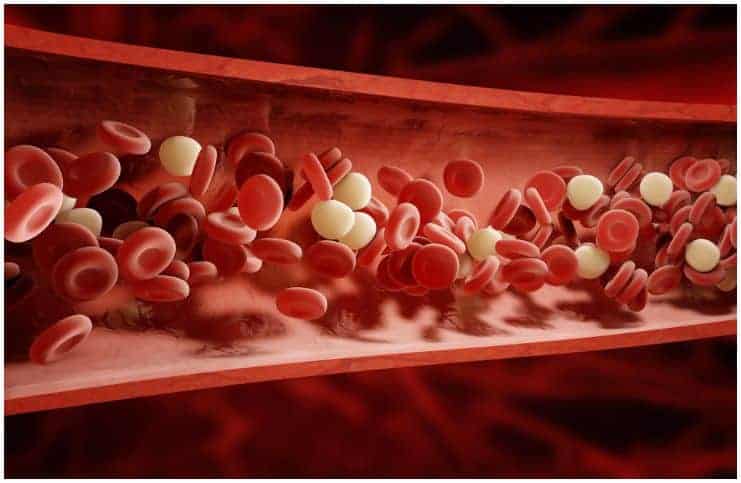This article reveals the differences between hemocyanin and hemoglobin:
Hemocyanin
It is a protein found in mollusks that transports oxygen in a similar way as hemoglobin transports oxygen in human blood. Only some arthropods use hemocyanin for oxygen transport in the blood.
The hemocyanins are actually oligomeric copper-containing proteins. The majority of mollusks have blue blood due to this protein.
Usually, hemocyanins have a high molecular weight; and temperature, pH, and ionic concentration modulate the oxygen affinity.
Structure
The evolution and structure of molluscan hemocyanin have been studied for over 25 years, however, it required the recent progress in X-ray crystallography, DNA sequencing, and 3D electron microscopy to produce a complete view of their evolution and structure.
In mollusks, the hemocyanin is approximately 290,000 daltons, with 2 copper units for every 50,000 daltons. The polypeptide chain binds about 6 to 8 O2 molecules.
In arthropods, hemocyanin is composed of 6 subunits or multiples of 6 subunits.
Function
The main function of this protein is the transportation of oxygen within the hemolymph of invertebrates. In addition, it has been strongly associated with important aspects of innate immunity, especially – phenoloxidase and antiviral-like activities.
READ MORE: Facts About Pharmacists & Pharmacies
Hemoglobin (Hb)
It is an iron-containing protein in the blood of many animals. In 1904, Christian Bohr, a Danish physician, discovered that hemoglobin is the transporter of oxygen.
The name ”hemoglobin” is made from the blend of ”heme” and ”globin.” Heme is an iron ion coordinated to a porphyrin that acts as a tetradentate ligand and globin is the globular protein in which heme is embedded.
The whole molecule of Hb is a tetramer, consisting of 4 subunits joined together by ion bonds and H- bridges. Hence, Hb has a quaternary structure.
About 6.25 gm of Hb are synthesized and destroyed a day in the human body. A low Hb count is usually defined as less than 12 grams per deciliter for females and less than 13.5 grams of hemoglobin per deciliter of blood for males.
Symptoms of low Hb count include:
- reoccurring headaches;
- a fast or irregular heartbeat;
- unexplained or frequent bruising;
- muscle weakness;
- fatigue;
- pale gums and skin.
An individual may have a low Hb level for a variety of reasons, such as:
- bone marrow suppression by radiation exposure or chemotherapy;
- kidney disease;
- problems with the liver;
- red blood cell synthesis problems;
- pregnancy;
- blood loss from surgery or trauma;
- gastrointestinal blood loss;
- iron-deficiency anemia;
- vitamin B12 deficiency;
- folate deficiency.
Structure
Each Hb molecule is made up of 4 heme groups surrounding a globin group, forming a tetrahedral structure. Iron is the main component that actually binds to oxygen, hence, each Hb molecule is able to transport 4 molecules of O2.
READ MORE: Famous People With Osteogenesis Imperfecta
Function
The major role of Hb is to transport oxygen from the lungs to the tissues. In addition, Hb returns carbon dioxide from the tissue to the lungs. Carbon dioxide is then released as a person exhales.
Hemoglobin transports about 23 percent of carbon dioxide and 98 percent of the total oxygen present in the blood. The process whereby Hb performs this vital physiological role is described by cooperative interaction among its constituent subunits.
Fetal Hb binds to oxygen more strongly than adult Hb, enabling the transfer of oxygen from mother to fetus prenatally.
Natives of the Andes Mountains have a significantly higher concentration of Hb in their blood. This allows for more oxygen to be transported by the same volume of blood.
Moreover, Hb has a role in helping red blood cells obtain their disc-like shape, which helps them move easily through blood vessels.
READ MORE: Celebrities With Pancreatic Cancer
Bottom Line – Hemocyanin vs Hemoglobin
Hemocyanin carries oxygen in the hemolymph of many arthropods and mollusks, hence, it is a central physiological factor in these animals.
Hemoglobin is the main protein in mature red blood cells. Its important function is to transport oxygen from the lungs through the arteries to the tissues and help to transport CO2 through the veins back to the lungs.
The affinity of Hb for oxygen can be modified by numerous physiological factors in ways that respond to the requirements of tissues for oxygen under a variety of circumstances. When someone has insufficient red blood cells (RBCs) or the ones he or she has do not work as they should, the body is left short of the O2 it needs to function healthily.
In conclusion, hemocyanin, like Hb, is a multi-subunit molecule where each subunit or functional unit of a subunit binds to oxygen.
READ THIS NEXT: Facts About The Gallbladder and Gallstones
References https://pubs.acs.org/doi/abs/10.1021/bi00870a022 https://academic.oup.com/icb/article/47/4/631/633425 https://www.ncbi.nlm.nih.gov/pubmed/1992165
